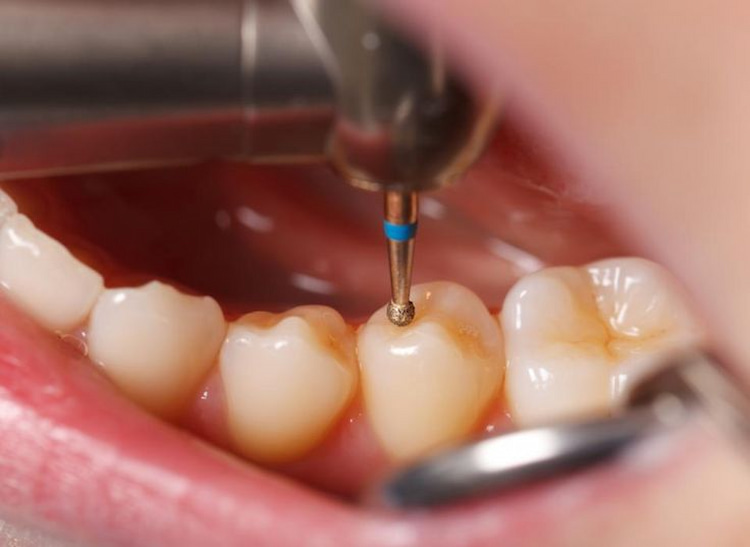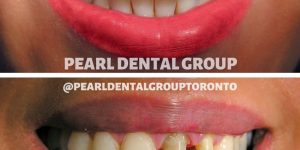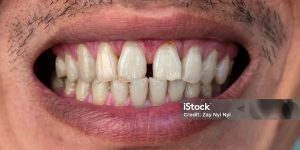When it comes to cosmetic dental treatments, one common question that often arises is: Can cosmetic composite cause tooth decay? The short answer is no; cosmetic composites themselves don’t directly cause tooth decay. However, like any dental procedure, there are a few risks involved that could lead to problems like decay if proper care is not taken. If you’ve recently had cosmetic composite fillings or are considering them, it’s important to understand how they work and the factors that can influence your dental health moving forward. In this article, we’ll explore the risks and benefits of cosmetic composites, what factors can contribute to tooth decay after treatment, and how to protect your smile post-procedure.
Can Cosmetic Composite Lead to Tooth Decay?
Cosmetic composites, typically made from composite resin, are popular choices for fillings due to their ability to blend seamlessly with the natural color of your teeth. While these fillings are safe and effective, the main concern isn’t necessarily the material itself but rather how you maintain your oral health after the procedure.
The key point to understand is that the composite material itself doesn’t directly cause tooth decay. However, if you don’t care for your fillings properly, decay could still develop. Let’s dive into this in more detail.
Does the Material Itself Cause Decay?
As mentioned earlier, the composite material used in cosmetic fillings doesn’t encourage tooth decay. In fact, composite resins are usually preferred over older filling types like amalgam because they bond directly to the tooth structure. This means less preparation and drilling is needed, which can help preserve more of your natural tooth.
However, tooth decay can occur around or underneath the composite filling if bacteria are allowed to thrive. Over time, plaque and food particles can accumulate around the edges of a filling, leading to the potential for decay. This is especially true if the filling is not properly maintained or if there are gaps or imperfections in the material that allow bacteria to sneak in.

What Factors Lead to Tooth Decay After Cosmetic Composites?
Tooth decay after getting cosmetic composite fillings is more about how you care for your teeth than the material itself. Several factors can contribute to tooth decay, especially if the proper steps aren’t taken to protect your oral health. One of the main causes of decay is poor oral hygiene. If you’re not brushing and flossing regularly, plaque and bacteria can build up around your filling, potentially leading to cavities. You also need to pay attention to the edges of the composite filling, as this is where decay is most likely to start if food or bacteria get trapped.
Diet also plays a significant role in the health of your fillings. Eating too much sugary or acidic food can encourage bacteria to grow and produce acids that attack the enamel around your filling. Similarly, if you have habits like grinding your teeth or biting on hard objects, you could be putting unnecessary stress on your filling and increasing the chances of developing decay.
Lastly, regular dental check-ups are key. If you don’t visit your dentist regularly for cleanings and check-ups, small issues that could lead to tooth decay, like gaps in the filling or wear and tear, may go unnoticed. Keeping up with your preventive dental care is essential for maintaining the longevity and health of your cosmetic fillings.
Keep Your Smile Healthy!
At Pearl Dental Group, we’re here to help you maintain your cosmetic composite fillings and prevent decay. Contact us today to schedule your appointment and keep your smile shining!
How to Prevent Decay with Cosmetic Composites
Preventing decay with cosmetic composites is all about maintaining strong oral hygiene habits and ensuring that your dental fillings are well taken care of. Here are a few steps to help protect your smile.
- Brush your teeth at least twice a day with fluoride toothpaste to remove plaque and prevent bacteria buildup.
- Flossing is crucial for cleaning between your teeth and around the edges of your fillings where a toothbrush might not reach.
- Foods high in sugar and acidity can contribute to plaque formation and increase the risk of cavities. Eat healthier snacks and drinks to reduce this risk.
- Regular visits to the dentist will help spot any potential issues early and allow for timely interventions.
- Some people may prefer to use dental sealants, which are thin coatings applied to the surface of teeth to protect them from decay. Talk to your dentist about whether sealants could help protect your fillings.
- Drinking plenty of water can help wash away food particles and bacteria from your teeth and gums.
If Decay Develops Beneath a Composite, How Is It Treated?
Even with the best care, it’s still possible that decay may develop underneath or around a cosmetic composite filling. If this happens, the treatment will depend on the severity of the decay. For mild cases, the dentist may clean out the decayed area and re-seal the filling. If the decay is more extensive, however, the filling might need to be replaced altogether. In some cases, the decay could be deep enough to compromise the underlying tooth, in which case further treatments like a root canal may be necessary.
If you notice any signs of discomfort, sensitivity, or unusual changes around your filling, it’s important to visit your dentist as soon as possible. Catching decay early can prevent more extensive and costly treatments down the line.
Conclusion
Cosmetic composite fillings are a great choice for restoring teeth while keeping your smile looking natural. However, they don’t make you immune to tooth decay. Proper oral hygiene, regular check-ups, and a healthy diet are crucial in ensuring the longevity of your fillings and preventing decay from developing around or beneath them.
If you ever find yourself concerned about your fillings or need advice on how to best care for them, don’t hesitate to reach out to a trusted dental professional. At Pearl Dental Group, we’re committed to helping you maintain a healthy, beautiful smile. Schedule an appointment today and ensure that your cosmetic composite fillings stay in perfect condition for years to come.
FAQs
Can composite fillings get cavities around the edges?
Yes, cavities can develop around the edges of a composite filling if plaque and bacteria are allowed to accumulate. Proper oral hygiene can help prevent this.
What happens if tooth decay occurs around a composite filling?
If decay occurs around a composite filling, your dentist may need to clean the area and replace or repair the filling, depending on the severity of the decay.
Are composite fillings more likely to cause tooth decay compared to amalgam fillings?
No, composite fillings are not more likely to cause tooth decay than amalgam fillings. The risk of decay primarily depends on oral hygiene and how well the filling is maintained.
How can I ensure my cosmetic composite remains decay-free and in good condition?
Brushing and flossing regularly, avoiding sugary foods, and attending regular dental check-ups will help keep your composite filling in good condition and free from decay.
What are the warning signs of decay developing under or near a cosmetic composite?
The warning signs include tooth sensitivity, discomfort around the filling, or visible changes in the filling’s appearance, such as dark spots or cracks.
Can cosmetic composites be replaced if decay occurs beneath them?
Yes, cosmetic composites can be replaced if decay develops beneath them. Your dentist will assess the extent of the decay and recommend the appropriate treatment.









